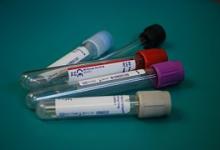The Increasing Cost of First-Line Biologics for Plaque Psoriasis Save

A national commercial claims analysis of first-line use of biologics in biologic−naive plaque psoriasis patients found a near doubling of net treatment costs from 2007 to 2021 ($21 236 to $47 125). Despite the increasing costs, the 2021 average cost could have been 44% lower if the lowest-cost drug in the same mechanistic class were chosen.
Biologic treatments for plaque psoriasis are numerous and includ inhbitors of TNF−α and interleukin (IL) 12/23, IL-17, and IL-23 inhibitors. From 2007 to 2021, trends in biologic use changed with physician impressions, but also several head-to-head trials showing selective superiority.
This cross-sectional study used a national commercial claims dataset (2007-2021) of biologic medication−naive PsO patients initiating treatment with either 4 TNF-α inhibitors, 1 IL-12/IL-23 inhibitors, 3 IL-17 inhibitors, and 3 IL-23 inhibitors. Researchers assessed trends in use and average estimated annual treatment costs over time, using commercial estimates of net prices (accounting for manufacturer rebates). Estimated savings were calculated for patients who had initiated the lowest-cost treatment within each class.
The study included 76 781 Psoriasis patients, half were female, and 72% were between 30 and 59 years old; 30% had Psoriatic arthritis.
From 2007 to 2021, the proportion of patients using non-TNF inibitors increased to: (in 2021)
- 42% for IL-23 inhibitors
- 21% for IL-17 inhibitors
- Higher use of IL-23/IL-17 inhibitor was seen with male, older, Northeast, without comorbid arthritis or inflammatory bowel disease
Overt this time frame, the annual treatment cost increased from $21 236 in 2007 to $47 125 in 2021. 2021 treatment costs ranged from $12 413 (infliximab) to $70 043 (risankizumab). If patients initiated the lowest-cost medication in each class, the average annual treatment cost would have been 44% lower in 2021 ($26 363).
For Plaque psoriasis patients, there have been significant shifts in treatment choices and costs. The most expensive choices weren't more effective, hence substantial savings are possible if lowest-cost options are considered at the start of therapy.








If you are a health practitioner, you may Login/Register to comment.
Due to the nature of these comment forums, only health practitioners are allowed to comment at this time.